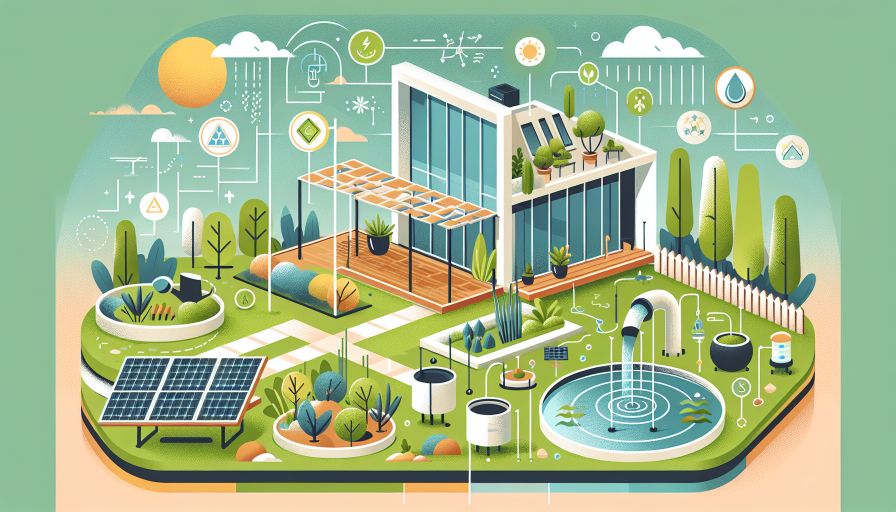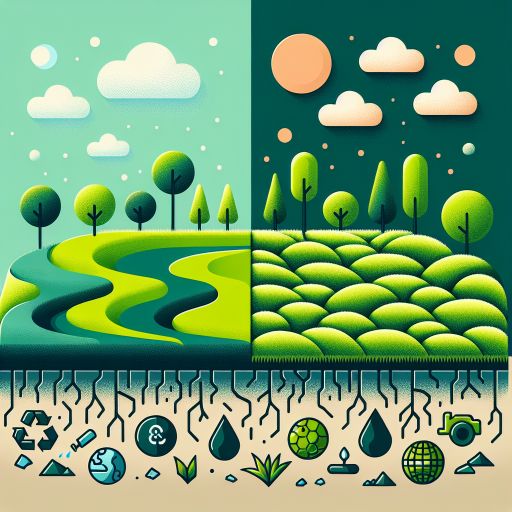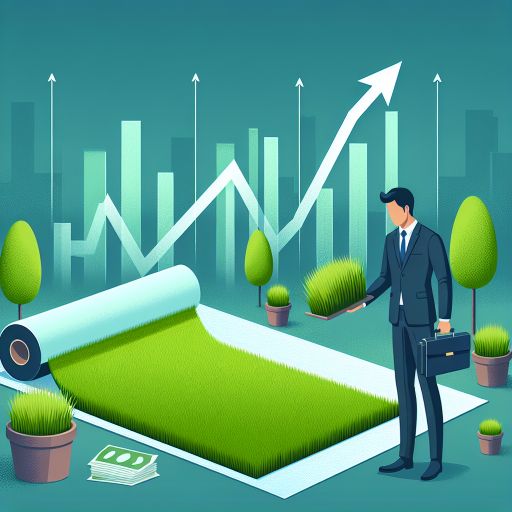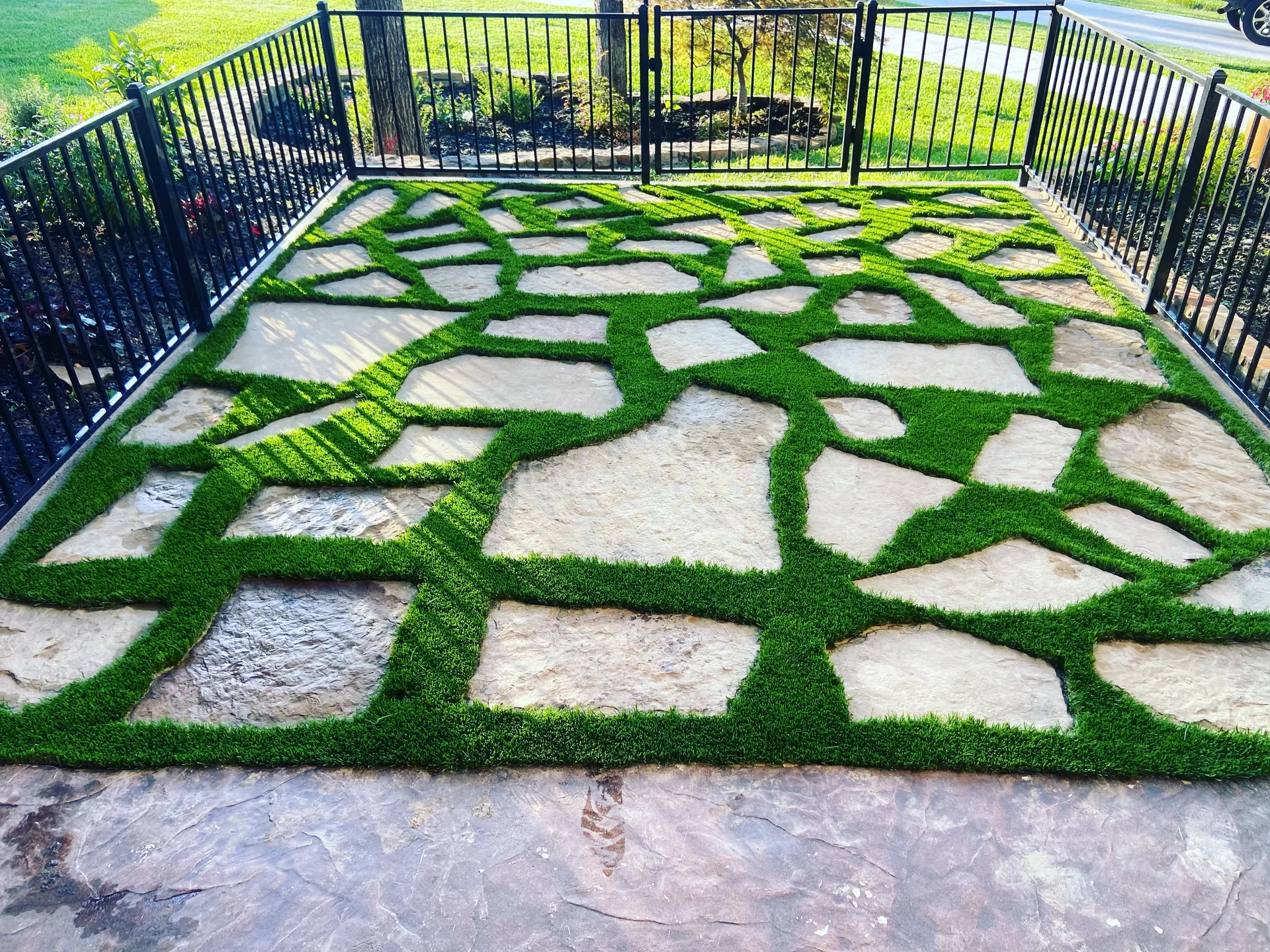
Introduction to Climate-Resilient Landscaping and Synthetic Turf
Climate-resilient landscaping has become a significant focus in modern environmental management. With growing concerns over climate change, landscape architects and homeowners alike are seeking sustainable solutions to maintain green and functional outdoor spaces. One such solution is the utilization of synthetic turf.
Synthetic turf offers a variety of benefits when integrated into climate-resilient landscaping designs. Unlike natural grass, synthetic turf does not require water, fertilizers, or pesticides to maintain its appearance, making it a more sustainable choice in environments struggling with water scarcity and soil health issues. Furthermore, synthetic turf can withstand extreme weather conditions, thus providing a reliable, year-round green cover.
Prime Design Turf has positioned itself as a leader in this space by offering top-quality synthetic turf solutions tailored to diverse needs. With over 20 years of experience, Prime Design Turf specializes in transforming various outdoor environments, including residential gardens, backyard putting greens, pet-friendly zones, parks, playgrounds, and sports fields. Their comprehensive approach ensures that each project is not only aesthetically pleasing but also environmentally sustainable.
One of the key aspects that differentiate Prime Design Turf is their commitment to personal service. Each project begins with a creative design phase where client needs and site-specific conditions are meticulously considered. This is followed by a detailed installation process carried out by skilled professionals, ensuring that the synthetic turf is not only installed correctly but is also optimized for longevity and performance.
Moreover, Prime Design Turf prides itself on offering these high-quality services at unbeatable prices. This cost-effectiveness, coupled with their dedication to client satisfaction, makes them a preferred choice for many. Their synthetic turf solutions contribute significantly to reducing water usage, minimizing chemical runoff, and ensuring that outdoor spaces remain green and usable regardless of climatic challenges.
As we continue to face the impacts of climate change, integrating synthetic turf into landscape designs offers a viable path forward. It aligns with the principles of climate-resilient landscaping by providing durable, low-maintenance, and eco-friendly alternatives to natural grass. Companies like Prime Design Turf play a crucial role in facilitating this transition, helping to create sustainable outdoor spaces that can withstand the test of time and weather.
Environmental Benefits of Synthetic Turf
Synthetic turf offers several key environmental benefits that make it an attractive option for climate-resilient landscaping. These benefits are primarily rooted in its ability to reduce resource consumption and its lower impact on the surrounding ecosystem compared to natural grass.
Reduction in Water Usage
One of the most significant environmental advantages of synthetic turf is its reduced need for water. Unlike natural grass, which requires regular watering to maintain its appearance and health, synthetic turf does not need irrigation. This is particularly important in drought-prone regions where water conservation is critical. Studies have shown that households can save up to 56,000 gallons of water per year by switching from natural grass to synthetic turf.
Reduction of Pesticides and Fertilizers
Natural lawns often require the application of pesticides and fertilizers to combat pests and promote growth. These chemicals can have detrimental effects on local ecosystems, including contamination of water sources and harm to wildlife. Synthetic turf eliminates the need for these chemicals, thereby reducing the risk of chemical runoff and contributing to a healthier environment.
Reduction of Carbon Footprint
Maintaining natural grass typically involves the use of gasoline-powered lawnmowers and other equipment, contributing to carbon dioxide (CO2) emissions. In contrast, synthetic turf requires minimal maintenance, drastically reducing the carbon footprint associated with lawn care. Research indicates that synthetic turf can help cut down CO2 emissions by as much as 25% annually when compared to traditional grass maintenance practices.
Prevention of Soil Erosion
Synthetic turf’s sturdy construction can also aid in the prevention of soil erosion. Natural grass can be uprooted or die off, leaving soil exposed and susceptible to erosion, especially in heavy rainfall areas. Synthetic turf remains intact regardless of weather conditions, providing a stable ground cover that helps prevent soil degradation.
Conservation of Biodiversity
While synthetic turf does not host the same biological activity as natural grass, it can contribute to biodiversity conservation indirectly. By reducing the dependency on chemical treatments and water resources, the surrounding natural habitats can remain undisturbed and healthier, allowing local flora and fauna to thrive.
Materials and Recyclability
The materials used in synthetic turf, such as polyethylene and polypropylene, can be recycled at the end of their lifecycle. Advances in recycling technologies allow for the repurposing of synthetic turf, further extending its environmental benefits by reducing landfill waste and the need for new raw materials.
In conclusion, the environmental benefits of synthetic turf make it a viable option for sustainable outdoor spaces, contributing to water conservation, reduced chemical use, lower carbon emissions, erosion control, and biodiversity preservation.
Water Conservation and Synthetic Turf
Water scarcity is a critical issue in many regions worldwide. Traditional grass lawns require substantial water for maintenance, making them less viable in areas prone to drought or facing water restrictions. Synthetic turf, on the other hand, presents a practical solution to this challenge by significantly reducing water consumption.
Typically, natural grass demands around 55 gallons of water per square meter annually. In contrast, synthetic turf needs minimal to no water. This considerable difference is particularly advantageous in arid regions or during periods of drought.
The following table provides a comparison between the water requirements for natural grass and synthetic turf:
| Description | Water Consumption (Gallons/Year per sq. meter) |
|---|---|
| Natural Grass | 55 |
| Synthetic Turf | 0-1 (For optional cleaning) |
The potential water savings are substantial, making synthetic turf an essential component in sustainable landscaping efforts. By integrating synthetic turf into outdoor spaces, homeowners and communities can substantially reduce their water usage, helping to preserve this critical resource.
In addition to residential applications, commercial properties and public spaces can benefit from synthetic turf installation. For instance, sports fields, parks, and educational institution grounds can achieve significant water savings, contributing to broader environmental conservation goals.
Many municipalities and water districts have recognized the advantages of synthetic turf and offer incentives for its installation. Rebates and financial assistance programs encourage property owners to transition to more water-efficient landscaping options, bolstering community-wide water conservation efforts.
Water conservation is not merely about maintaining greenery; it plays a crucial role in mitigating the impacts of climate change. Synthetic turf, by minimizing the need for irrigation, contributes to more resilient and sustainable outdoor environments. Consequently, it supports long-term environmental health and resource sustainability.
Maintenance and Longevity of Synthetic Turf
Maintenance and longevity are crucial factors to consider when evaluating the overall sustainability and practicality of synthetic turf in landscaping. Unlike natural grass, synthetic turf requires different types of care to maintain its appearance and functionality over time.
Synthetic turf maintenance is generally less demanding compared to natural grass, which needs regular mowing, watering, fertilizing, and pest control. However, it is not entirely maintenance-free. Here are some routine maintenance activities for synthetic turf:
- Brushing: Regular brushing helps keep the synthetic fibers upright, enhancing the turf’s appearance and usability.
- Debris Removal: Periodically removing leaves, twigs, and other debris prevents matting and maintains drainage efficiency.
- Rinsing: Occasional rinsing helps wash away dust, pollen, and other fine particles that may accumulate on the turf surface.
- Sanitization: Especially relevant for turf used in pet areas or sports fields, sanitizing or using odor-neutralizing products can help maintain a pleasant and hygienic environment.
The following table provides a side-by-side comparison of the average maintenance requirements for synthetic turf versus natural grass:
| Task | Frequency for Natural Grass | Frequency for Synthetic Turf |
|---|---|---|
| Mowing | Weekly | Not required |
| Watering | 2-3 times per week (in dry climates) | Occasional rinsing |
| Fertilizing | Seasonally | Not required |
| Weed Control | As needed | Minimal, with proper installation |
| Debris Removal | As needed | Regularly |
| Brushing | Not applicable | Monthly |
Regarding longevity, synthetic turf typically lasts between 10 to 20 years, depending on the quality of the materials used and the level of maintenance it receives. Higher-quality products often come with warranties that guarantee a certain lifespan. This extended life cycle reduces the need for frequent replacement, conserving resources and lowering ongoing environmental impact.
In conclusion, while synthetic turf does require some level of upkeep, its maintenance demands are generally lower than those of natural grass. Additionally, its extended lifespan contributes to its appeal as a sustainable, climate-resilient landscaping option.
Economic Impact of Synthetic Turf in Landscaping
The economic impact of synthetic turf in landscaping is multi-faceted, affecting various stakeholders including homeowners, businesses, and municipalities. The initial costs, long-term financial benefits, and broader economic implications make it a significant consideration in climate-resilient landscaping.
Initial Investment and Installation Costs
The upfront cost of installing synthetic turf can be higher compared to natural grass. Factors influencing the initial price include the quality of the turf, the size of the area, and the complexity of the installation. Costs can range from $5 to $20 per square foot, depending on these variables.
Long-Term Financial Benefits
Despite the higher initial costs, synthetic turf offers several long-term financial advantages:
- Reduced Water Bills: Installing synthetic turf can decrease water usage by up to 70%, significantly reducing water bills.
- Lower Maintenance Costs: Synthetic turf requires minimal upkeep compared to natural grass, eliminating the need for mowing, fertilizing, and pest control.
- Longevity: High-quality synthetic turf can last between 15 to 20 years, offering a longer lifespan than natural grass.
Economic Impact on Communities
The adoption of synthetic turf in public spaces such as parks, sports fields, and schools can lead to substantial cost savings for municipalities. For example, the City of Fresno reported annual savings of approximately $200,000 from reduced water use and maintenance expenses after installing synthetic turf in public areas.
Moreover, synthetic turf can enhance property values. A well-maintained landscape using synthetic turf can attract buyers willing to pay a premium for lower maintenance costs and sustainable living.
Job Creation and Industry Growth
The synthetic turf industry has seen significant growth, generating employment opportunities in manufacturing, installation, and maintenance sectors. According to the Synthetic Turf Council, the industry supported nearly 220,000 full-time jobs and contributed $2.7 billion to the U.S. economy in 2017.
Innovation in materials and installation techniques continues to drive industry growth, increasing demand for skilled professionals in these areas.
Conclusion
While the initial investment for synthetic turf can be substantial, the long-term economic benefits and broader economic impacts make it a viable alternative to natural grass in climate-resilient landscaping. From reducing water and maintenance costs to generating jobs and supporting industry growth, synthetic turf plays a crucial role in creating sustainable and economically sound outdoor spaces.
Future Trends in Climate-Resilient Landscaping
As the global climate continues to change, the landscape industry is evolving to address environmental challenges through innovative solutions. One of the significant trends in climate-resilient landscaping is the increasing use of synthetic turf. This chapter explores future trends and the role synthetic turf will play in creating sustainable outdoor spaces.
Integration of Smart Technology
In the future, we can expect smart technology to be integrated into synthetic turf systems. Innovations like embedded sensors will allow for real-time monitoring of surface temperature, moisture levels, and usage patterns. This data can help optimize maintenance schedules and improve the overall performance of synthetic landscaping solutions.
Advances in Materials and Sustainability
Future generations of synthetic turf will likely see advancements in materials technology, focusing on reducing environmental impacts. Research is ongoing in developing recyclable and biodegradable components, making synthetic turf even more sustainable.
Enhanced Aesthetics and Performance
Innovations in design will improve the aesthetics, texture, and performance of synthetic turf. Future products will more closely mimic the appearance and feel of natural grass, enhancing user experience and increasing adoption rates in both residential and commercial settings.
Policy and Regulatory Support
Government policies and regulations may increasingly support the use of synthetic turf in water-scarce regions. Incentive programs and subsidies for incorporating climate-resilient features into public and private projects can drive further growth in the market.
Community and Commercial Projects
There will likely be a notable increase in community and commercial landscaping projects incorporating synthetic turf. Applications such as urban parks, school playgrounds, and commercial properties will benefit from reduced maintenance costs and improved durability.
Below is a summary of the expected trends and their impact:
| Future Trend | Impact |
|---|---|
| Smart Technology Integration | Enhanced maintenance and performance monitoring |
| Advances in Materials | Greater sustainability and environmental benefits |
| Improved Aesthetics | Closer resemblance to natural grass and higher adoption |
| Policy Support | Increased incentives for climate-resilient projects |
| Commercial and Community Use | Wider application in public and commercial spaces |
Looking forward, the role of synthetic turf in climate-resilient landscaping appears promising. As technology advances and sustainability becomes a focal point, synthetic turf will increasingly be an essential component of eco-friendly and durable outdoor spaces.


